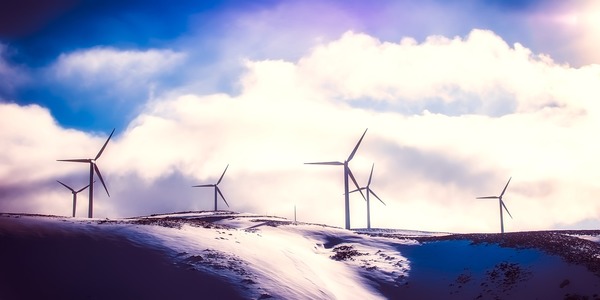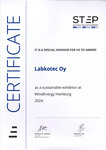News Release from windfair.net
Wind Industry Profile of
WindEnergy Hamburg Goes Digital
After the trade fair was postponed from September to December due to the Corona pandemic, it quickly became clear in autumn with soaring infection figures that an event with several thousand exhibitors and visitors from 100 countries could not take place in 2020.
So Hamburg & Congress and its cooperation partners decided to organise a digital event with company profiles of the participants, product videos, webinars and white papers.
An ambitious plan - however, it became clear right at the beginning on Tuesday - too ambitious, as Bernd Aufderheide, Chairman of the Board of Management of the organiser, Hamburg Messe & Congress, had to admit: "Our goals were ambitious. Unfortunately, however, we did not succeed in the time available in reproducing digital exhibitor profiles at the start of the trade fair in a quality that would have satisfied ours' and our customers' requirements".
And so WindEnergy Hamburg is now limited to two livestreams on the web. In cooperation with WindEurope, who would have organised the conference part of the presence fair, too, a varied programme has been put together. Studios in Belgium, Germany and the UK cover a wide range of wind energy topics over four days.
Most important insight right at the start: the wind energy industry is doing fine despite the pandemic. Fatih Birol, head of the International Energy Agency (IEA), even said in an interview with WindEurope CEO Giles Dickson: "Solar and wind are immune to Covid-19" - a bold statement given the thousands of jobs lost in the renewable energy sector worldwide in the wake of the pandemic, but not essentially wrong either.
Ben Backwell, head of the Global Wind Energy Council (GWEC), pointed out the good figures, too. At the beginning of the pandemic in spring, a slump of around 20 percent was expected in the further expansion of wind energy. In reality, the slump has only been 6 percent. According to Backwell, some governments have already used the time to set new climate targets and to ensure positive political decisions.
A record growth in new wind energy is thus expected next year especially in China and the US, the two world leaders. Feed-in tariffs for the Chinese will expire at the end of next year, which means that remarkably strong growth is expected next year. The offshore sector in particular will grow strongly worldwide: GWEC expects an expansion to 234 GW by 2030.

The prospects for the wind industry look good (Image: Pixabay)
And what is the situation on the German market, which has come under severe pressure in recent years? Better, if believing the survey of works councils commissioned by trade union IG Metall. Overall, more than a third of the participants gave a positive assessment of the market in Germany. For the offshore sector this was over 45 percent.
"We have lost a lot of jobs and value added in the wind industry in Germany in recent years. These current figures should not hide this fact", said Daniel Friedrich, district manager of IG Metall Küste, "and this year the clear-cutting continued in some companies - for example at Enercon in Aurich and Magdeburg".
According to the survey, however, the employment trend is slowly stabilising. Only eight percent of the companies (2019: 24 percent, 2018: 39 percent) are planning to cut staff. In 16 percent of the companies, more employees are expected to be hired in service and maintenance. So far the industry has come through the Corona crisis in good shape. The works councils report only minor effects on business and production.
And so there is at least some truth in a statement that has been heard time and again in recent weeks. Although the wind industry is not "immune" as Birol says, it is at least 'resilient' against Covid-19.
- Author:
- Katrin Radtke
- Email:
- press@windfair.net
- Keywords:
- WindEnergy Hamburg, trade fair, livestream, WindEurope, Hamburg, Germany, market, China, OSA, offshore, onshore, floating, pandemic, ambitious


























